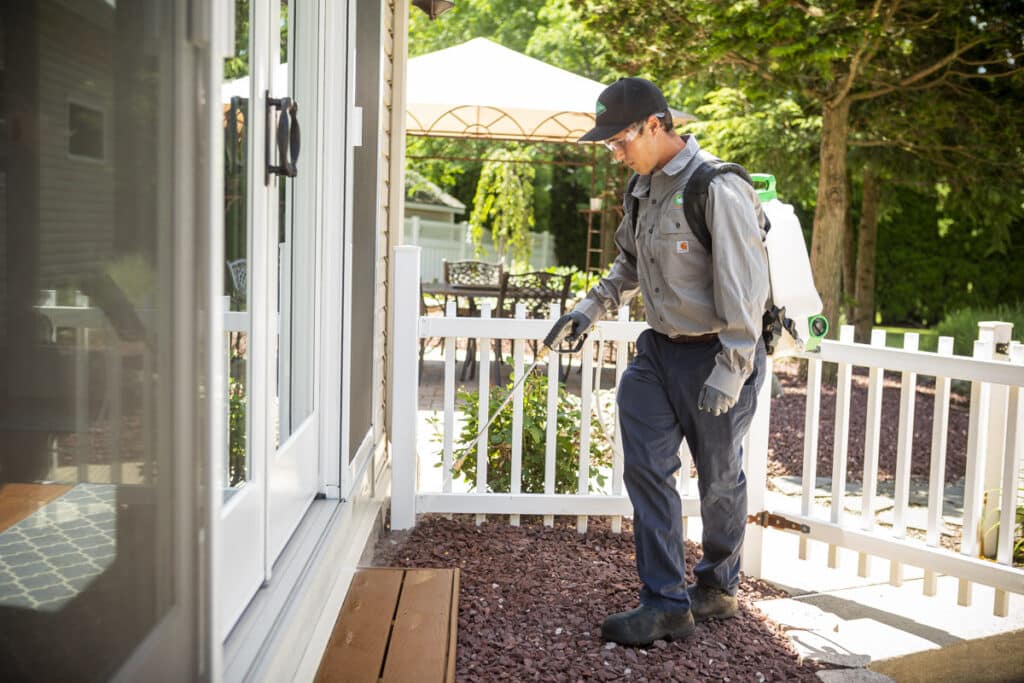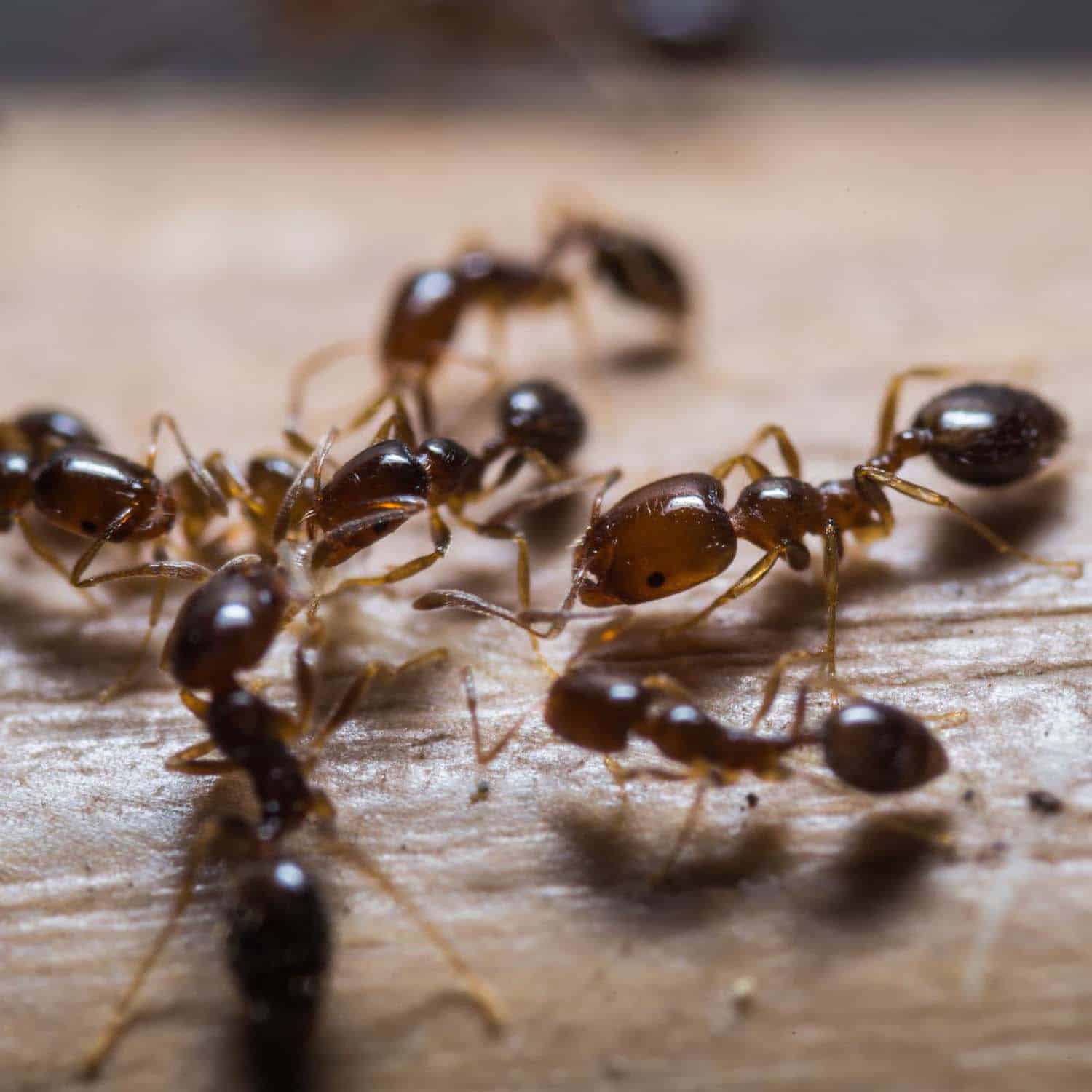Carpenter ants may seem harmless at first glance, but these silent destroyers can wreak havoc on the structural integrity of your home. Carpenter ants, in contrast to termites, do not feed on wood. Their nest-building excavating activities, on the other hand, may cause expensive and extensive damage over time. Your home’s security and resale value are at risk from an untreated carpenter ant infestation. Understanding how they operate, the signs of their presence, and effective prevention methods is essential for protecting your home.

Understanding Carpenter Ants
What Are Carpenter Ants?
Among the many ant species present in America, the carpenter ant is among the biggest. The queen is much bigger than the average male, which normally measures 6–12 millimeters. Although most species of these ants are black, you may find those that are reddish or even yellowish. Carpenter ants, like other wood damage pests, prefer to nest in wood, especially areas that are moist or decayed, making homes with water damage particularly vulnerable.
Nesting Habits
Carpenter ants build their nests by hollowing out wood to create smooth tunnels. They may infest healthy wood if needed, but they are more at home in decaying or wet wood where they can more easily burrow. A single colony often has a primary nest and several satellite nests, which can spread through various parts of a home, making it harder to fully eliminate an infestation.
How Carpenter Ants Damage Your Home
Structural Damage
Carpenter ants don’t eat wood, but their habit of tunneling through it can weaken the structural components of a house over time. As they excavate galleries to build their nests, they compromise the strength of wooden beams, floors, walls, and even furniture. Dangerous floor drooping, wall bulging, and other structural issues may develop over time.
Signs of Infestation
Knowing the warning signs of a carpenter ant infestation is key to catching the problem early. Look for:
- Frass: This is the stuff that comes out of the tunnels as carpenter ants work. It looks like sawdust. You might find small piles of it beneath wooden structures.
- Visible Ants: Spotting large, winged ants inside your home, particularly in spring, is a strong indication of an active colony nearby.
- Rustling Noises: If you put your ear against an infested wall or wooden structure, you may hear faint rustling or clicking sounds as the ants move within.
Potential Risks and Costs
Financial Implications
The longer a carpenter ant infestation goes undetected, the more expensive the repairs become. Structural damage caused by these ants often requires professional carpenter ant removal, followed by replacing infested wood and repairing weakened structures. Homeowners can expect to pay anywhere from a few hundred to several thousand dollars, depending on the extent of the damage.
Safety Concerns
Carpenter ants might pose a threat to your home’s security in the event of a major infestation. Weakened support beams or floor joists could create hazardous conditions. Homes with extensive damage may not be safe for occupants until repairs are made, adding to the overall disruption and expense.
Prevention and Control Measures
Preventive Actions
Keeping carpenter ants out of your home begins with prevention. Here’s some advice:
- Eliminate Moisture: Take care of any leaking faucets, pipes, or roofs. Damp wood is an open invitation to carpenter ants.
- Seal Entry Points: Find and fix any gaps in your home’s foundation, windows, and doors.
- Remove Dead Wood: Firewood, tree stumps, and any other kind of wood waste should not be placed near the foundation of your house.
Detection Methods
Regular inspections can help detect problems before they escalate. The basement, kitchen, and bathrooms are particularly damp places to pay attention to. Check wooden structures for soft spots or hollow-sounding wood.
Professional Intervention
While do-it-yourself approaches could be effective for smaller infestations, it’s wise to contact a pest control expert when dealing with more extensive colonies. By using targeted treatments, experts can find and destroy both main and satellite nests. To make sure the infestation doesn’t come back, professional pest control services can provide follow-up inspections.
Differentiating Carpenter Ants from Other Pests
Carpenter Ants vs. Termites
Although they seem similar, termites and carpenter ants are really very different in terms of behavior and the kind of damage they do. Termites consume wood, leaving behind mud tubes and hollow wood. The wood tunnels left behind by carpenter ants are smooth and tidy. Termites tend to stay hidden, while carpenter ants may be seen foraging for food.
Other Wood-Damaging Insects
Other pests like powderpost beetles and wood borers can also damage wood, but carpenter ants are unique in their nesting behavior. Choosing the right treatments becomes easier when you know the difference.
Stay Alert Before Carpenter Ants Turn Minor Damage Into Major Repairs
If carpenter ants are not found and removed from your property right once, they may cause serious and expensive damage. To lessen its effects, early detection and action are essential. Your greatest line of protection against these damaging insects is regular inspections, preventative maintenance, and expert pest control services. By being alert and taking care of carpenter ant problems before they worsen, you can safeguard your investment.
Avoid expensive carpenter ant damage to your property by using Prevent Pests! Our knowledgeable staff provides in-depth assessments and efficient treatments to maintain the safety and pest-free status of your property. Don’t wait until the damage is done—call Prevents Pests today and safeguard your home’s value and structural integrity!

